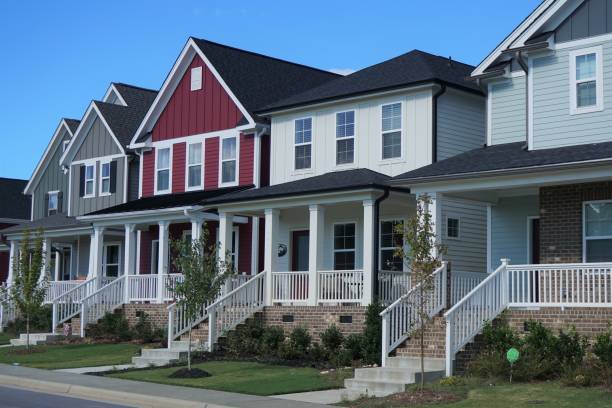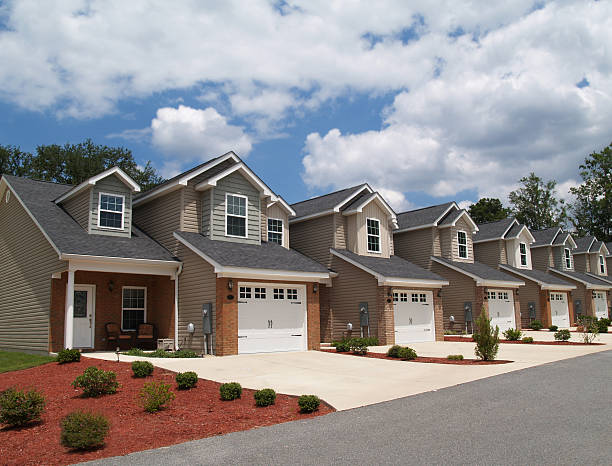
Investing in Non-Owner-Occupied Single-Family Homes can be a great way to build long-term wealth. The crucial aspect is—how can you gather the necessary funds for them? Today, there are many more methods for financing that were not available in the past. Knowing how to do things correctly will save you time as well as unnecessary costs and worries, whether you are new or an experienced landlord.
So, in this guide, we will cover all the information you require. Today, we will review how to get funding, the different types of loans available and suggestions to help you gain approval. Additionally, we’ll always aim to keep things basic, transparent and practical, how a real investor would like.
What Are Non-Owner-Occupied Single-Family Homes?
Before we discuss financing, we should first know what it involves.
Non-Owner-Occupied Single-Family Homes are those that do not have you as the person living there. The purpose of buying one is to rent it or flip it to make a profit. A single-family home is a separate house built for one family. Using them together is an effective strategy for making real estate investments.
So, why are investors so fond of them? Because they’re:
- Easier to manage than multi-family buildings
- Popular with renters
- Simple to resell
Why Financing is Different for Non-Owner-Occupied Single-Family Homes
Financing a home you don’t live in is not the same as buying your primary residence. Lenders see non-owner-occupied single-family homes as riskier. But, why? If money gets tight, people usually pay their own mortgage before their rental property loan.
This risk factor means:
- Higher interest rates
- Plus, bigger down payments
- And, stricter loan requirements
But don’t worry—there are still plenty of ways to fund your deal.
1. Traditional Bank Loans for Non-Owner-Occupied Single-Family Homes
So, let’s start with the obvious one.
Conventional loans from banks or credit unions are still a popular choice. However, they’re not always investor-friendly.
So, what You Need:
- Strong credit
- Plus, steady income
- Low debt-to-income ratio
- And, 15–25% down payment
Banks often require full documentation—tax returns, pay stubs, bank statements. So, if your finances are in great shape, this can be a cost-effective option. But if not, it’s worth looking elsewhere.
2. DSCR Loans (Debt-Service Coverage Ratio Loans)
Now we’re getting into investor-specific tools.
DSCR loans look at how much income your property generates. So, instead of focusing on your personal income, lenders check if the rent covers the mortgage payment.
So, why Investors Love It:
- No tax returns required
- Faster approvals
- Furthermore, the focus is on property performance, not your job
These loans are perfect for full-time investors or those with lots of write-offs on their taxes.
3. Hard Money Loans for Non-Owner-Occupied Single-Family Homes
Moreover, if speed is your game, hard money loans are your best bet.
These loans are asset-based, meaning they’re based on the property’s value—not your income or credit.
So, what to Expect:
- High interest rates (8–12%)
- Short terms (6–24 months)
- Quick closings (as fast as 5 days)
Use hard money for fix-and-flip deals or to grab hot opportunities fast. Loan Locker, a Tampa-based private lender, is a trusted source for this kind of financing. Additionally, their access to discretionary capital means reliable, fast funding when you need it most.
4. Portfolio Loans
These are loans kept on the lender’s books, not sold to big banks.
So, why It Matters:
- More flexible underwriting
- Creative deal structures
- Lastly, can be used for multifamily investing at once
These loans are ideal for growing investors who want to scale fast.
5. Private Money Loans
Besides, this option comes from individual investors—not banks.
You might know someone willing to lend money for a return. Or you might work with groups that connect you to lenders.
Pros:
- Super flexible terms
- Relationship-based
- Great for unique deals
So, just make sure everything is in writing. Treat it like a real business deal—because it is!
6. HELOCs and Cash-Out Refinances
In addition, if you already own property, you can use its equity to buy another.
A Home Equity Line of Credit (HELOC) or cash-out refinance gives you quick access to funds.
Best For:
- Buying more rentals
- Renovating current properties
- Building long-term wealth
However, keep in mind: your home or property is the collateral. So, don’t overextend.
7. Seller Financing
Furthermore, sometimes, the seller becomes the bank.
They carry the loan and you pay them directly.
Perks:
- No banks involved
- Flexible terms
- Helpful for low-credit buyers
These deals work best when the seller owns the home outright. Always get a real estate attorney to review the contract.
Tips to Get Approved Faster for Financing Non-Owner-Occupied Single-Family Homes
Want to speed up your funding? So, follow these simple steps:
- Firstly, check Your Credit – Aim for 680 or higher.
- Secondly, save for a Bigger Down Payment – 20% or more is ideal.
- Thirdly, keep Clean Records – Lenders love organized paperwork.
- Moreover, have a Solid Business Plan – Show how the property makes money.
- Lastly, work With the Right Lender – Choose investor-focused lenders like Loan Locker.
Benefits of Working With Loan Locker for Financing Non-Owner-Occupied Single-Family Homes
Loan Locker isn’t just any lender. They’re a Tampa-based direct private lender with access to discretionary capital. That means:
- Faster closings
- Flexible approvals
- Investor-friendly terms
If you need funding without the red tape, Loan Locker can help you close with confidence. They specialize in non-owner-occupied single-family homes, making them a perfect partner for your next investment.
FAQs About Financing Non-Owner-Occupied Single-Family Homes
1. What’s the minimum down payment for an investment property?
In most cases, you should plan to put down between 15% and 25%. Some companies will offer you less and usually, those departments have higher interest rates.
2. Can I get a loan with bad credit?
Yes, because hard or private money lenders can often be used for this type of loan. Still, keep in mind that you will likely pay additional interest and fees.
3. How fast can I close on a non-owner-occupied home?
Thanks to Loan Locker, the closing process might be completed in only a few days.
4. Are there special loans for fix-and-flips?
Yes! Hard money and rehab loans are tailored for short-term fix-and-flip deals.
5. What if the property doesn’t have tenants yet?
A lot of lenders analyze the rental market to calculate and approve loan amounts.
6. Can I use rental income to qualify for the loan?
Yes. Your rental income is the primary factor considered when applying for a DSCR loan.
Final Thoughts: Non-Owner-Occupied Single-Family Homes
Financing non-owner-occupied single-family homes in 2025 doesn’t have to be confusing or stressful. There are many mortgage options such as traditional, private money and DSCR loans, for every investor. But the best way is to get a loan that matches your aims and hire professionals who understand what you are looking for.
Loan Locker is here to provide you with quick results, strong reliability and a focus on investors. Dealing with these lenders is simple, as you can access funds quickly and easily. Regardless of your business stage, the right lender can help you succeed in making investments.
So, set aside time to examine the financing options, keep inquiring and think about your plans. Lastly, if you plan and receive proper help, your experience in real estate investing could be easy, profitable and last for years.

